A brisk morning roused the capital from slumber, and the bathroom’s heated floor gave us comforting sensations. At 7:30 in the morning, the temperature outside was a pleasing 52-degrees. At 7:30 in NYC, citizens endured 39-degrees (not including the Wind Chill Factor). We preferred Prague.
Lewis and I woke early because we had a destination to go to for breakfast. We rode the Metro under the river and emerged at Anděl (Angel) Station.
Begun in 1977 during the Soviet regime, it was initially named Moscow Station to honor the capital of Russia, which was also the capital of the Union of Soviet Socialist Republics (USSR). After Czechia's liberation, the station was given its angelic name.
We were in the spiffy Smíchov neighborhood: one of the best-known "west bank" communities. It's populated with young professionals who like historic charm. Modernization of the Smíchov Railroad Station began this month: tracks, elevators, platforms, and technology. Despite that, the station will remain operational during the 3-year project, so it can do its purpose to serve the people.
That is drastically unlike NYC. For the previous 6 weekends, the juncture-station between our county and Manhattan was closed for “station improvements” that were invisible. Hundreds of thousands of riders had to find alternate routes to cross the river into Manhattan for their jobs. Click on any image to make it bigger/clearer...
Commuters must allow extra time for delays as they transfer inconveniently to alternate routes and find ways back to their intended destinations… while dozens of overpaid transit workers sit idle at Queensboro Plaza Station. 90% of that ugly station is unimproved from 1916 when it was built.
In the 1800s, Prague was surrounded by “industrial neighborhoods”: Karlin, Holesovice, Liben, and Smichov.
In 1838, Emperor Ferdinand V "The Benevolent", issued a royal proclamation that elevated Smíchov to a suburb. During modern gentrification, the government designated Smíchov as an Urban Monument Zone to protect its historic layout. Redbrick buildings are interspersed with ones made with lavender-painted stones.
The city’s Food Hall is nearby, enclosed during winter and featuring a pool in summer. *It looks like this...
We proceeded on Stroupeznickeho, a street named for a Czech playwright who was born in 1850 and worked for the National Theatre. An urban legend alleges that he had a homoerotic relationship that ended abruptly, which resulted in gunshots that disfigured his face… and that funneled his energy into writing.
Going around a corner, we continued on a back-alley. We approached our destination, yet we didn't see it. Similar to Super Tramp Coffee, the entrance was “off the beaten path” and obscured from the street. On the left, we saw a unkept structure that was previously a carpentry workshop. Paint peeled off the walls, and a ratty gate stood ajar.
You might walk past it before you realize that it's your destination. It gave us a a sense of stumbling upon a hideaway!
The name of the place is Kavárna co hledá jméno, which translates to “Café looking for a name”. (Kavarna means Café). Its appearance is "warehouse chic". Instead of putting resources into a lavish decor with blinking lights, sparkly furniture, and spot-lit trees, their focus is on the food. It is a “diamond in the rough”: a rough urban exterior with a cozy interior. The “breakfast restaurant” is an oasis within the urban landscape, and it specializes in bouncy egg soufflés.
Entering through the gate, we turned onto a walkway and approached a pile of firewood. Customers were clustered on a patio at tables and chairs under a chestnut tree.
Through old industrial windows, we saw bright lights and lots of people at every table.
I yanked the doorknob and an old battered door swung open. Despite the shabby exterior, the clientele was vibrant. A young man waited for a table, wearing a baggy jacket, tight jeans, and a bucket hat. Two girls in heeled boots and turtlenecks sipped sparkling wine by the window.
A young woman with a wide-brimmed hat and a slouchy sweater walked past us to the “stylishly unfinished lavatories”.
The window-counter had two giggly men munching on pretty food. Just after we entered, a fashionable mother pushed her baby stroller into the restaurant.
We glanced into the main room; every type of person was there. Young, old, single, foursomes, fashionistas, tourists, and college kids. I didn’t see an available table, but I hoped for one soon. Lewis and I liked the rusticated brick walls, modern lights, sleek wooden chairs, and spacious wooden tables. Bookshelves were full, and comfy armchairs beckoned.
A hostess told us to wait behind the stanchions at the other end of the room… which was far from the barista counter. A powerful espresso machine whirred efficiently in the corner. While waiting for a table, I asked if I could approach the barista and buy a coffee? She denied my request and said that she’d bring it to me. So, instead of getting near the coffee menu to see the options, I merely requested a basic cappuccino. From afar, I admired the counter: it was handsomely carved from a tree trunk!
Five people entered and waited patiently behind us. Being friendly, they overheard our American accents and chatted with us. Prague’s “café culture” is ripe with conviviality. Praguers put value on encountering people with different perspectives (unlike too many Americans who quickly become agitated, defensive, offensive, and rude). It’s a huge difference between how many Americans live. If you say “Good morning. Nice day, isn’t it?” to a typical New Yorker, they’ll look crudely at you as if you’re going to solicit them for money or act like a weirdo. If you say it to a Praguer, they’ll smile at you and reciprocate your courtesy. We prefer Prague's manners.
Eventually, we got a table in the side room, which doubled as a photo gallery. Sunbeams filled it from a row of windows.
We were escorted to a table with two sling-back armchairs (not great for leaning forward to eat on). Two old-fashioned rocking chairs filled a corner.
A smiley blonde waitress gave us menus. We ordered different versions of their famous soufflé eggs, smothered with our favorite emulsion: Hollandaise sauce. Each soufflé was served on a savory bun, topped with wilted spinach and bacon.
They were quite tasty. We both drank pulpy orange juice in chilled glasses.
The menu didn’t mention pastries, but I remembered seeing a glass case on the barista counter—full of pastries. So, I investigated...
... but I was confronted by the hostess. She insisted that I return to my seat. For what reason? With a firm voice, I told her that if she didn’t let people see the desserts, nobody could buy them. I asked her to show me where they were mentioned on the menu? When she couldn’t, she finally understood me. With a steady gaze, I said, "It's not my job to educate you, and you shouldn't do things without knowing what you're doing." By then, I was discouraged from giving more money to the place, so I returned to my seat. I told Lewis, and he agreed, so we paid and left. When that buffoon hostess is gone, we’ll return. Owners must take an interest in their employees, or unhelpful ones will deter profits. We invested 565 crowns ($23.74) for our breakfasts.
We returned to the Metro and saw a workman vacuuming the area. A city that owns nifty machines like those is focused on cleanliness.
Despite being the dirtiest city in America, NYC refuses to invest in that technology. So, its overpriced streets look like this every year...
Despite paying taxes for a Sanitation Department, business owners must pay extra as Business Improvement Districts (BIDs) to hire additional people to remove litter and discarded trash. It's pathetic.
With awe, we also admired the properly-sized bus stop shelters. For the benefit of riders, they actually extend for the length of the buses. You won't find that in NYC.
Despite paying to live in America's richest city, most bus passengers must stand outside without any shelter or bench... in all types of rain, snow, hail, humidity, scorching summer sun, or frigid wind. I had three years of that in various areas of NYC.
If a bus shelter exists, it's unhelpfully narrow and a short length.
Seen above and below, most bus shelters in NYC lack proper roof protection, and they don't have maps! It seems as if they are only built as an excuse to have advertisements for money. Since America focuses on car ownership, it disparages against people who use public transportation. Czechia does not.
We rode the train to Staroměstská (Old Town Station), and we were pleased to see policemen patrolling the train.
We went upstairs to browse the shops on Parizska (Paris Street). The street got its name because it’s reminiscent of Parisian boulevards. It is nestled in the Jewish Quarter, and it’s brimming with luxury boutiques and fashion flagship stores.
For comparison, greed in NYC allows Fifth Avenue, Madison Avenue, and Hudson Yards to look like garbage. Greasy food vendors emit smoke and stench outside of the most expensive boutiques (where retailers pay the highest rents).
Illegal peddlers on overcrowded sidewalks selling badly-made trinkets and illegal-fake “luxury brand merchandise” to gullible tourists.
The cluttered scene looks cheap… like a third-world nation.
*To see what NYC’s “elite” retail district looks like, please use this link: https://halfwindsorfullthrottle.blogspot.com/2016/05/filth-around-manhattans-fifth-avenue.html
The buildings around Paris Street are gorgeous! Many have towers that are crowned with turrets, spires, and spikes, and their corners are embellished with statues.
One depicted a Roman legionnaire fiercely slaying a grotesque dragon! Another had two life-size women—perched precariously on either side of a window—who seemed to be combing their hair.
The most spectacular was on the Karel Masek House of 1908. A pair of nude women (twice as large as humans) who were perched over a copper doorway with their arms and legs dangling out from the wall. They were truly three-dimensional.
Passersby posed for photos by jumping and trying to “high-five” the palm of a woman. Me, too!
There are many unclothed statues in Prague, and that adds to its artistic yet mischievous whimsy.
Impressively, none of the stores were vacant, and that is very different than NYC. This month, 27 vacancies exist in buildings on NYC’s once-impressive Madison Avenue between 52nd and 59th Street. That’s very bad. It’s worse when you realize that the lack of retailers and tenants has existed for six years since 2018. NYC refuses to invest in infrastructure yet its landlords demand the highest rents in the nation. Now, they can’t keep occupants. But—just like the doomed French aristocrats at Versailles—they started another year by ignoring the decline of their properties and increasing the rent AGAIN. From my office’s windows on Madison Avenue, I can look across the street and see an old skyscraper (mostly unimproved from the 1940s) that is almost entirely vacant. The owner probably wants to compel the city government to pay to fill his forlorn building with refugees that are brought to NYC every month. (That’s what the greedy overpriced hotels did to solve their vacancy problems). The city is full of greed and stupidity, and its landlords rarely had to spend money on renovations before now. For 170 years, their typical arrogant attitude was, “If you don’t like it, you can leave. Plenty of people want to be here, so they’re replace you.” Nobody is replacing them now.
We entered the Chanel boutique so Lewis could commiserate with his Czech colleagues.
We met a gay salesman named Daniel who was Czech. His career took him to kingdoms in the Middle East, but he returned to his homeland for better Life/Work Balance. Daniel was enthused to meet a Manhattanite like Lewis: someone who was born on the island and grew up amidst its “big city” vibe.
They compared inventories because some items are only allocated to certain marketplaces. They swapped tales of “VIP customers” and “horror stories” of how to handle nasty ones. (There are fewer nasty ones in Prague).
Daniel toured us through every room in his flagship store. Stylish elegance and poised employees were everywhere. Unlike “rules” in NYC, employees in Prague were allowed to socialize and use their cellphones. Lewis gave comparisons to his store in NYC: a cheap and uncaring landlord allows the building’s air-conditioning to malfunction every summer. The elevator breaks repeatedly, and rain leaks into the stockroom. Lewis and his team try to uphold Chanel’s policy of upscale service, but despite the overpriced rent that Chanel pays for its store, the building’s landlord refuses to invest in infrastructure. That demonstrates the difference of both cities and what they deem as acceptable. NYC’s attitude of “If you don’t like it, get out and make space for the multitudes who are lured here” often permeates businesses that stay in NYC.
Lewis commented that Paris Street seemed much safer than NYC. Recently, his client was only two blocks from his Chanel store when she was mugged by thugs who tried to steal the Chanel item she intended to return for a refund. Desperately, she clung to it, so they yanked her into the street and dragged her along the pavement! Bystanders did nothing (typical of NYC). She fought them and won. She arrived at the boutique with ripped pants, scraped knees, and bloody hands. That happened in daylight in a pricey area—and it was the tenth robbery of the year—yet the police refuse to add more patrols. It seems like a third-world country. *See more in this link: https://halfwindsorfullthrottle.blogspot.com/2021/03/ineffective-authorities.html
Daniel’s store opened 2 years ago. Czechs are known for spending modestly, but Chanel created its store for Prague’s year-long tourism. Foreigners come to Prague to enjoy its lower costs and its central location—equidistant to anywhere in Europe. In fact, Daniel takes many affordable trips to other European nations—especially as rejuvenation from his job. He was hired by Chanel one year ago, and he already gets 5 weeks of paid vacation per year. He was appalled that Lewis only got 2 weeks per year for the first five years of his career—even though they both work for the same company! Lewis only achieved a third week after 5 years AND completing higher sales goals. He will never attain 5 weeks while working in the USA. As a manager at a global company, I only get 2 weeks of vacation per year, which is cheap and crappy. Yet, my colleagues in the United Kingdom and Switzerland get 5-6 weeks per year. Daniel remarked that employees in the USA might get paid higher, but the lack of laws to protect them makes it seem like working in a third-world country. We agree.
Of all the nations in the world, the USA mandates the least amount of vacation time for its citizens. It is the only first-world nation without government-mandated paid vacation time of any kind! Legally, the United Kingdom guarantees 28 days of "paid time off" for employees, France ensures 25, Germany gives 20, Chile demands 15, and Israel requires 11 by law. America guarantees zero. The USA’s bad rating is next to Micronesia and Nauru. (Those are third-world countries). The USA is one of the few nations that has no mandated Paid Maternity Leave. Even America's public holidays are not guaranteed to be paid; it is a privilege to employees if companies pay them for holidays.
Daniel asked about our agenda for the rest of the week, and he was impressed with all the local activities that we already did! With civic pride, he gave us more “insider tips” for enjoying the city. He and Lewis will stay connected by email and social media, and he will be glad to see us again anytime.
Lewis and I sauntered up-and-down various streets to do “window shopping”. Towards Old Town Square, we observed a spectacular “parade” of expensive cars on Paris Street. Showy cabriolets, sporty Ferraris, elegant Mercedes sedans, and Bentley coupés drove slowly in circles to be admired by gawkers. A cluster of boys stood in the street to make videos of them.
Drivers revved their powerful engines and “made a show” of driving past them—to give the boys a great scene. The car-owners and boys were very happy.
We watched them, and we were amused by how the boys rated each car and shouted with elation when a rare one drove by. Please watch my brief video to see their enthusiasm...
You can't have that type of fun on NYC's "retail streets" because never-ending traffic problems prevent it...
Furthermore, NYC's antiquated steam heating system from 1882 remains underground (overheating the subways in summer!) and causing the city to puncture its streets for orange steam vents. They are ugly during every month of the year, and they remind the world that NYC refuses to invest in infrastructure.
Hand-in-hand, we proceeded south to Old Town Square. As usual, it was bustling with people, and we saw tour-guides hoisting colorful umbrellas into the air as identifiers. Despite the hubbub, the old site retained its charm.
27 small white crosses are embedded in the cobblestones near Old Town Hall.
They memorialize the 27 Czech lords who were executed there in 1621 for leading a religious revolt against the pro-Catholic Habsburg emperor. 11 of the decapitated heads were mounted on iron poles at Old Town’s Bridge Tower for ten years, as a menacing reminder. On October 14, 1918, a public protest occurred at Old Town Square to demand Czech independence from the Dual Monarchy of Austria-Hungary. Alas, in 1948 the first Soviet-appointed president stood there to proclaim Soviet control over the nation… which lasted 41 years until 1989.
We rode the Metro into Vinohrady.
We lunched at a Chinese restaurant named Chi Xiao Mian. The name translates to “Small Noodles”, and it’s famous for hand-pulled noodles and authentic recipes (no “Sweet & Sour Chicken” or Chop Suey atrocities). It’s in a handsome green building on the corner, facing Jiřího z Poděbrad Square. Rarely in America does a fair-priced Chinese restaurant occupy a handsome building. As a corner-property, the interior was full of brightness.
Everything looked tidy and stylish. When we entered, the enticing aromas proved that the cooking was traditional and accurate. The owner is Gong Zuewen, and her kitchen serves recipes from the Chongqing Province, which was the birthplace of Sichuan cuisine. Her restaurant opened one year ago in March, and it’s very popular. We enjoy supporting equality, so a female restauranteur was another attribute. The room was filled with Asians and Caucasians, which is a good indication. In the USA, most people who seek Chinese restaurants are Asians… or white people who want cheap food—because America’s Chinese restaurants are compelled to be low-priced/low-quality. In Prague, they can be posh and also popular with people who have discerning palates.
We used the lavatory to wash our hands, and it had an illustration of a naked woman drinking wine. Interesting.
A young man greeted us, and he deduced that we were out-of-towners. He gave us a table that faced the cooks, so we could admire the open-kitchen. Four Chinese cooks used modern technology and classic techniques to prepare handmade dumplings, hand-pulled noodles, and wok-fried recipes. Our table was against a handsome bookcase with a fish tank in the middle. So cool! We watched the colorful small fish swimming around, and it added a Zenful element to our meal.
Nearby, two Czech women slurped noodles while their fuzzy dog napped on the floor. With kindness, our waiter provided a bowl of water for him.
Our waiter conversed in fluent Mandarin with Lewis. He was born in China and relocated to Czechia ten years ago. He smiled authentically and said that he liked Prague very much! He admitted that the capital needs more good Chinese restaurants. (We heard that from other Praguers, too). Yet, he believes that upmarket authentic Chinese and Taiwanese restaurants are coming—thanks to the new direct flights to both nations. *[In 2016, China’s president, Xi Jinping, came to Prague for a three-day State Visit to create stronger relations. It was the first visit of a Chinese president in 67 years, and it was a precursor to better commerce. Last year, China’s premier, Wen Jiabao, came to Prague for the 11th China-European Union Summit. For comparison, the last time an American president visited Czechia was Obama in 2010].
The man complimented Lewis’ language skills and said that Lewis spoke Mandarin extremely well for someone raised in the USA. (When he talks in Mandarin, there is only a slight American accent). To show-off, Lewis spoke Mandarin with a Cantonese accent and then with a heavy American accent. Then, he talked in fluent Cantonese, and he spoke several phrases in Shanghainese and Taiwanese dialects. The waiter was wowed! Lewis told him about how his grandmother relocated to Hong Kong (a Crown Colony of the U.K. at the time) and then emigrated to Manhattan.
Graciously, our waiter informed us that Prague has a significant population from Asia, and its Taiwanese Society Association (prestigiously located across from the parliament building) is active with monthly events. Every year, Prague hosts a Dragon Boat Festival, and thousands of Czechs participate in rowing on the Vltava River.
Near the capital, there is a huge practicing area for rowers. That is impressive infrastructure built for cross-cultural experiences.
The Czech Dragon Boat Association was formed in 1997, and it competes internationally with 30 countries. It sponsors a national award that sports crews (men and women) vie for during the Grand Prix. There are 600 crews from all over Czechia!
Our menu said, “In every bowl, a story is told. A city that’s bold and never cold”. Lewis ordered a slew of delicacies. Our chopsticks rested on miniature porcelain ducks, and we received a carafe of tap water.
We received an amuse bouche of brined vegetables and marinated radish slices. My jasmine tea was presented on a handsome wooden tray with loose tea leaves in a teapot. A handle-less cup was on the tray, and a metal drain was underneath it—to catch wayward drips. That was nifty!
First, we shared a basket of steamed shrimp dumplings, and we admired the chef’s smartness to put reusable doilies under the dumplings. When restaurants use paper doilies, the dumplings stick to then and rupture when you try to lift them away.
As a main dish, we got a steamy beef soup with handmade noodles. The long noodles had ideal texture, the beef was delish, and the broth was piquant with red chili and mustard leaf! Watching people create hand-pulled noodles is entertaining; they need expertise to stretch, slam, knead, and pound the dough, while keeping the lengthening noodles untangled. It’s amazing. Each slam to the counter is necessary to force the gluten to provide elasticity—the ideal chewiness that customers want—that prevents breakage.
We also munched on Silky Chicken with Sweet Pepper Sauce, Giant Prawns, and Red Chili Pork Wontons. Each was super. We were too full for dessert, but the menu listed ice creams and Grass Jelly.
Being charming, our waiter gave us recommendations to make our time in his city more enjoyable. We thanked him and gave a generous gratuity that wasn’t expected. He will remember us and hopes to see us again in the future.
We sipped our tea and watched dozens of satisfied customers. As a finale of authenticity, there were no fortune cookies. Our bill totaled 1,183 crowns ($49.70).
We crossed the square and got aboard a tram to Wenceslas Square.
Once again, we applaud Prague for keeping its tram system. Every neighborhood in the city is blessed with silent transit. Please watch my brief video, and turn the sound on to notice how quiet those big machines are!
It is vastly nicer than NYC's buses that go roaring down the streets with badly-maintained engines that sound as loud as Soviet-eta tanks!
For digestion, we sipped espressos at DVA Studio Theater Café. It is under the Palace of the Phoenix: a theatrical space for staging dramas, plays, and musicals. The candlelit café is used by locals to evade the crowds at the square.
We got acquainted with a fellow named Bogdan who shared our communal table. He was happy to meet a pair of native New Yorkers. He works across the square at a recruitment agency that helps Information Technology expats. He had a curled “handlebar” moustache and a ponytail. We told him about our intentions to relocate, and he applauded our undying efforts. He praised Prague’s job market, which maintained a low amount of unemployment and therefore needed outsiders to fill jobs. The United Nations gave Czechia a Human Development Index score of 0.895, which makes it the 32nd-best HDI Score in the world!
Bogdan inquired about our agenda for the city? He was impressed that we already had tickets for the opera and a concert. His eyebrows shot up with surprise that we had dinner reservations at Trezor Spork. “You really did good research before coming here!” he said. We did. He talked candidly about “life in Prague”, and he gave suggestions. He recommended that we visit the Immigrant Integration Help Center, located near the National Museum. (It has four offices in Prague; each is near a Metro station for convenience). Full of thanks, we paid for his espresso, and we agreed to stay in-touch. Our careers impressed him, and his acumen determined that we would be valuable employees in Czechia.
Straightaway, we visited that Integration Center: Inegracni Centrum Praha.
Its work is sponsored by the government, and its services are provided for free. Usually, appointments are needed, but we were lucky to arrive at a quiet moment. They have staff who can speak many languages, so the receptionist had us wait until an English-speaking associate could meet with us.
They offer counseling and advice on Residency Permits, careers, school enrollment, doctor appointments, court appearances, foreign education recognition, pension enrollment, social benefits, Czech language courses, and “interpreting and accompaniment to public institutions”. They host seminars for immigrants and expats about various aspects of life in the Czech Republic. They sponsor many cultural events, so newcomers can assimilate. Whatever they can’t solve, they can guide you to find the appropriate experts. They also offer a mobile-device application for foreigners who live in Prague.
Lewis and I were wowed by their—and the city’s—efforts to help immigrants get acclimated in their new homes. That is a great level of helpfulness! Many people choose to relocate to Czechia for a better life. Czech culture is renowned for tolerance, and it formed a country where different types of people live cohesively to create gorgeous communities. We like that.
Lewis and I sauntered through Wenceslas Square.
Shaped as a long rectangle, the center of it is a greenway for pedestrians, benches, and a couple of cafés. It also serves as a thoroughfare, with two lanes of traffic on each side. Those streets are paved with stones, instead of concrete; that adds elegance.
The windows at La Formaggeria Gran Moravia displayed mouth-watering goodies, so we entered.
The company supplies high-quality meats, cheeses, and condiments from Moravia (one of three regions in the nation), Italy, and France. Here is Moravia’s coat of arms:
Moravians were a Slavic tribe that formed in the 600s. Three hundred years later, they settled in the territory that is still named Moravia. Residents in the Moravia Region of the Czech Republic still speak with a Moravian dialect of the Czech language, and 6% identify their ethnicity as Moravian. (Many people with Moravian ancestry reside in Slovakia because it was always the adjacent territory). Famously, Dr. Sigmund Freud—who began the technique of psychoanalysis—was Moravian, as well as the violin virtuoso Heinrich Wilhelm Ernst and the theorist Kurt Gödel.
Don’t let the store’s upscale appearance deter you; they have reasonably-priced food. We browsed a cornucopia of yogurt, butter from organic creameries, farm-fresh milk, and sausages. Cheeses from Moravia’s Brazzale Dairy are in high demand. Two Czech cheeses that won Protected Geographical Status (Designation of Origin) are Jihoceska and Olomoucke Tvaruzky (which I'll describe in Part 8), and that logo on a food proves quality!
Gran Moravia Vecchio is the company’s namesake cheese. Sold as chunks cut from wheels, it is a firm cow’s milk cheese that is aged for several months.
It is made by Brazzale, which was founded in 1784 and sells 6,000 tons of it locally and abroad.
The cheese achieved an eco-sustainable certification in 2011. Produced as a 30kg wheel, it requires 500 liters of milk from 75 Moravian farms, and the cheese is sent to Italy to ripen for 14 months. Its crystalline texture appealed to Lewis—similar to Parmigiano Reggiano.
We got a wedge of it, and that deliciousness was only 21 crowns ($0.88). Lewis wanted to get a bottle of “eggnog”. It's popular in Czechia during winter and spring! Made in Italy, that version was named Bombardino. In Italian, the name means “the bomb” because it’s so good.
It’s made with simple ingredients: milk, brandy, custard, and spices. Its eggy color appealed to us more than the milky stuff that is manufactured in the USA—with fructose corn syrup, corn syrup solids, dehydrated milk, bleached sugar, artificial flavors, triglycerides, industrial-made sodium phosphate, and genetically-modified eggs. It reminded us of Advocaat that we got from the Netherlands and Poland, and the Egg Liqueur that we drank in Germany. It’s usually a Christmastime beverage, but it reappears in Czechia during Carnival and Easter (which makes sense if you think of Easter eggs). Alas, the store only sold big bottles for 989 crowns ($42), and we wanted a smaller one. (We found one later, and I’ll describe it).
Next, we explored the area’s Passages and Arcades. Many buildings at the square are interconnected by concourses that go through them—like labyrinths. It was a popular innovation in the 1920s. Multi-purpose buildings were built with cinemas, theaters, offices, and cafes, and they were joined together with corridors full of shops that created "hidden lanes". People can enter one building and walk through passages into a second or third one. Often, you pass through two buildings to get to the next street. Sometimes, a passage emerges at a garden courtyard. It reminded us of Helsinki’s retail district or a small part of NYC’s Rockefeller Center. The network of shortcuts is very convenient, and Praguers use them daily—especially to shorten their commutes. Despite a few vacancies, most are well-populated, and all are clean. Their vintage elements remain: curved windows, mosaic tiled floors, old-fashioned doorknobs, chandeliers, sconces, wainscoting, mail slots, and Art Nouveau door-frames.
As we crisscrossed the square, we also visited the Marks & Spencer store—with an abbreviated grocery area—and three department stores: Desirred, Palac Korna, and Novak House.
Lastly, we used an enclosed passage named Arcade U Styblu to go through Palac U Styblu, (near the intersection of Vodičková Street).
We emerged at an urban garden.
Before entering, we visited SuSu Asian Grocery Shop, which was a sizable store to the left of the garden’s entrance.
Since it was outside of the USA, it was clean and orderly. (It’s hard to find those qualities at Asian markets in America). The proprietress was from China and spoke fluent Mandarin, but she also conversed in Czech to her white customers. (Outside of the racist USA, plenty of white people shopped at markets of other ethnicities). The store was well-stocked: pea shoots, ginger jam, yuzu tea, green tea cookies, tapioca pearls, crispy seaweed snacks, fresh vegetables, frozen fish balls, soup ingredients, and exotic fruit. It also sold European wine, and the average price was 129 crowns ($5.42). Great!
Then, we ventured into the urban garden. Please enjoy Lewis' video, and turn the sound on...
It belongs to the Church of Our Lady of Snows...
... yet it is open freely to everyone as a greenspace. It was planted by Carmelite monks in the 1340s, but it was restored by barefoot Franciscan monks in 1604, so it is named the Franciscan Garden. They cultivated fruit trees, spices, herbs, and veggies. In the 1950s, the monks were evicted by the Soviets. Now, there are many benches and gazebos for Praguers to enjoy that hidden oasis. A vegetable garden still exists in the center, and yew hedges form geometric patterns around it—like a maze. Apple trees still provide abundant fruit. A brick pavilion is in the center as a gift shop, and a fountain burbles serenely. In warmer months, trellises and arches are covered with flowers. Closer to the church, a playground is active with frolicsome children.
Looming over the garden, the Church of Our Lady of the Snows rises 34 meters with elegant buttresses.
After his coronation at Prague Castle, King Charles IV founded a monastery for Monks of the Blessed Virgin Mary of Mount Carmel. (Carmelite monks began in the 1100s on Mount Carmel in modern-day Israel because they admired hermits who preached from caves formerly used by the prophet named Elijah). The king intended to add a large Gothic church, but only the choir area was built. The religious Hussite Wars stopped the construction.
After pausing in the garden, we proceeded through the gateway at the other side. I wanted to use the public lavatory...
... but I was thwarted by an old woman who demanded money. Most people give coins, but tourists are unprepared. Now you are warned. That happened to us in Germany and France, too. The mandatory fees compensate the Lavatory Attendants. As the world becomes cashless, they might want to install tap-and-go payments.
Exiting the garden, we admired the quirky juxtaposition of styles at the church entrance: Gothic arches, a cubist lamppost (made in 1913 and the only cubist one in the world)...
... and ornate Victorian masonry in bright pastels. That is the beauty of Prague in one scene.
We snacked at Chatime Bubble Tea, which has entrances facing the park and Jungmannova Street. Beyond the USA, bubble (boba) tea shops are immensely popular with white people. As the largest franchise teahouse in the world, Chatime began on the island-nation of Taiwan in 2005, and it operates three locations in Prague. We visited that teahouse three times, and it was always full with local teenagers. It’s a popular hangout spot where kids congregate after school.
It was staffed by Chinese and Taiwanese workers who spoke in Mandarin to each other but in English to their customers. (Lewis startled them by chatting in Mandarin. He told jokes, and they recognized us during our next visit). Using the high-tech digital touch-screen ordering system, we chose non-milk fruit teas with tapioca “bubbles”, and we paid via tap-and-go. (American places still lack that technological convenience).
Since the teens came-and-went, it was easy to get a table. Our drinks were prepared promptly, and a numbering system alerted us. They tasted great: not overly-sweet, plenty of fruity flavor, and I liked my “bursting bubbles” that were full of lychee juice. The price was 100 crowns ($4.20) for each large drink: Grapefruit Green Tea with tapioca pearls (no ice or sugar) and Passionfruit Green Tea with tapioca pearls and “bursting bubbles” (no ice or sugar).
Exiting onto the street, we faced Adria Palace, built in 1924. It's always smart to look up in Prague, and when we did, we were astonished to see its Rondocubism (decorative cubist) style that was unique in Czechia during the Art Moderne era. It contained a movie theater that showed silent films until the first "motion pictures with sound" occurred in Czechia in 1927. Now, the cinema serves as a performing arts theater.
From there, we walked to the river and crossed a footbridge to Slavonic Island. It has a pretty park (2.2 hectares / 5.4 acres), and a mansion from 1837 that is an events space for catered parties.
(Prague has several islands. During our trip, we explored three. Praguers use bridges and ferries to do “island-hopping” for recreation).
At the northern tip, we saw some of the city’s ingenious hydro-infrastructure. That area of the Vltava River has a long ripple that bisects it, which is caused by a floodgate. The low-lying obstruction replaced two dams, and it is one of four canal-locks that prevent the water level from becoming hazardous. Boats pass through the locks on the west side, using a sluice at the Janacek Embankment.
During warmer months, kayakers and rafters ride over them!
In olden times, water-power stations existed on both sides. You can’t identify them because the city smartly disguised them as historic buildings and clocktowers. (The city cares about its appearance and respects its citizens).
Slavonic Island gives great views of both riverfronts, boats on the water, Legion Bridge (full of passing trams, cars, and people), Charles Bridge, and the skyline.
On our left, we saw Střelecký Island, which is accessible by elevators from Legions Bridge.
King Charles IV gave archers the privilege to practice there with bows and crossbows, and that expanded to shooters with muskets and rifles. Leaving Vienna, Emperor Franz Joseph visited it in 1852 to attend shooting competitions. Prague’s famous gunsmith, Antonin Lebeda, supplied monarchs around the world, and his double-barrel shotguns were demonstrated. Lebeda already sold a hunting rifle to the emperor in 1849, and received royal praise. So, he was ecstatic when the emperor placed an order for 18 guns! Their accuracy matched their beauty—especially the deer motifs between their cocks. Now, midsummer fireworks occur, and Pride Week's Gay Village is erected there. A waterside restaurant exists.
On our right, the Masaryk Embankment had the handsomest buildings.
Seen above, we noticed one of the river tunnels to the National Theatre, initially used for ventilation and now used for loading supplies from boats.
Related to the view of the castle, there was a bronze replica of it. If the city put a copy of that by the castle, it would be a perfect 3-D map of the castle's layout.
Returning to the mainland, we explored various streets randomly. Everywhere that we looked had architectural treasures. The first surge in urban development began grandly in the 1340s with King Charles IV, who was born in Prague. He was elected as the Holy Roman Emperor.
As the 11th king of Czech lands, he loved Prague and wanted to remain there. He issued a royal proclamation that made Prague the new capital of the huge Holy Roman Empire. That drew educators, craftsmen, artists, physicians, generals, merchants, architects, strategists, urban planners, inventors, alchemists, and nobility to Prague. The capital also flourished culturally during the reign of King Rudolf II, which lasted from 1575 to 1611. As an art-lover, Rudolf moved his powerbase to Prague, so countless scientists and artists were attracted there. It became a center of science, alchemy, astronomy, and artistry. Later, the city embraced the Industrial Revolution, and a renewal of development was widespread. Since then, infrastructure continues to keep up with municipal needs. (That fails to occur in American cities).
From the 1780s onwards, the capital grew to reassert Czech culture against the Germanic one imposed by Austria. In the 1800s, the city’s cafés and meeting halls were full of national revivalists. Between 1902 and 1912, the urban landscape was beautified with Art Nouveau architecture and furnishings: a showplace for the world.
During the 1920s, Art Moderne (Art Deco) structures were conceived with streamlined and cubist proportions.
Throughout each era, the citizenry preserved dozens of Gothic, Baroque, Romanesque, Renaissance, Rococo, and Moorish buildings as part of the Czech cultural landscape.
That is true development with a sensible approach. It makes Prague “one of a kind” in the world because originals are intact.
Returning to our hotel, we rehydrated with complimentary citrus-flavored water in the lobby (with reusable glassware).
We napped with our balcony door open to allow a fresh breeze (but no noise pollution).
After one sublime hour, I roused Lewis in a cheeky way! Ha ha! We showered and changed clothes for our anniversary dinner!
One of the prettiest ways to admire the riverside city is aboard a sightseeing River Cruise. What could be better than enjoying the scenery from a unique perspective while savoring a good meal? Several boat companies offer lunch and dinner cruises in Prague. For our 13th anniversary, Lewis and I decided to try something new, so we booked a dinnertime cruise.
Prague is gorgeous at night, and its landmark structures—hundreds of spires, turrets, towers, eaves, bridges, and masonry—are illuminated with spotlights and creative colors. As the lifeline of the Czech Republic, the Vltava River was always important, so many of Prague's historic structures were built on its shores. Therefore, a cruise at night is intimate and romantic.
After perusing the options, we chose a company named Prague Boats (founded in 1990) because their boats are amazing: sleek, glass-enclosed, and spacious. They have a fleet of 20 vessels that are used for tours, sightseeing meals, corporate events, summer parties, and weddings. After 34 years of successful cruises, Prague Boats accumulated many positive reviews.
Their “Crystal Dinner” cruise always occurs on ultra-modern boats, and we made online reservations for that. Our tickets announced that our voyage would occur on a boat named The Grand Bohemia. Seen below, it is their largest vessel.
It was built in Germany at Bolle Shipyard to accommodate 550 passengers, and it was launched in 2018.
With low-emission engines, retractable glass roof, and solar-powered air-conditioning, it’s the most modern tourism boat in the nation... and Central Europe. We were excited!
There were three categories of seating; we chose “Deluxe” because our table was located in the fully glass-enclosed area—including a see-through ceiling (perfect for going under the famous bridges, which are lit up at night). We eschewed the priciest category because it lacked a glass ceiling and was at the angular bow of the boat, which put most tables farther from the windows. We politely requested a table against one of the floor-to-roof windows. Two tickets cost 1,150 crowns ($49.65 total), and they included unlimited food from the buffet and a welcome drink of Czech sparkling wine. There was live entertainment from a keyboardist and vocalist.
Starting from a pier near Cechuv Bridge (built in 1905 with glorious Art Nouveau statues), the 3-hour voyage went up and down the Vltava River, gliding twice underneath several lamplit bridges. Getting there was easy: we rode Tram # 17 north from Narodni Divadlo to Pravnicka Fakulta. That riverside ride on the tram was a perfect segue to our nighttime voyage.
Within four minutes, we arrived at the Dvorak Embankment, named for the famous Czech composer, Antonín Dvořák. We were thankful for a lack of traffic congestion at that time—which occurs every day where we currently live.
We crossed the street and descended a stairway to the quay. The quay was wide and spacious. Made of elegant stones, a tall retaining wall fronted the street.
Several boat companies were located there, and we saw a variety of vessels. Prague Boats had the nicest terminal, and our boat was docked behind their other flagship: Bohemian Rhapsody. Streetlights made the water sparkle. Across the river, we looked up to admire Prague Castle—majestically illuminated on its hilltop.
We stepped aboard and were welcomed by a woman in a dress who spoke Czech and then English. Almost every table was full with happy passengers, so we knew it was a popular cruise. A vested man escorted us to our table on the port side of the boat. As requested, our table-for-two was against the large windows, so we had an unobstructed view.
A smiley waitress handed us sparkling wine in chilled flutes.
The overhead lights dimmed for ambiance, and each table had a slender lamp for romantic illumination. The boat’s layout was smart: a central row of banquettes, and clusters of tables extending towards either edge of the boat.
Czechs are punctual people, and the boat was able to shove-off on-time at 19:00 (7pm). Without a shudder or thump, The Grand Bohemia propelled itself silently away from the dock.
Prague Boats prides itself on environmentally-friendly boats, which is the opposite of pollutive tourism boats in NYC and its rusty/smokey Staten Island Ferries. With 226 horsepower, the engines were remarkably quiet—not even a mechanical hum! The deck was built with excellent insulation against noise and vibrations. It also causes less noise pollution for the underwater environment—something we learned about in Norway, last year. *To see our Norwegian fjord cruise on that kingdom’s most-modern boat, please use this link: https://halfwindsorfullthrottle.blogspot.com/2023/08/our-trip-to-oslo-norway-fjord-cruise.html
We sat back and reveled in the pure beauty of gliding over the ripples of water, as our moonlit cruise began! Piano music and a ripple of keys fluttered over the hubbub of the crowd. Stemware clinked together, and we heard the pop of a cork. People danced. A server gave us a bread basket with packets of butter.
We sailed upriver at a regal pace, going past a restaurant named Brick’s in an old redbrick warehouse. Outdoor customers were clustered around flaming fire pits that gave an orange glow. The boat tooted its horn, and those people waved at us. We waved back.
To make things convenient for everybody, the long boat had two "buffet & beverage" sections. Fortunately, our table was near a section. Chafing dishes of warm food gave a mouth-watering aroma: roasted pork, fried chicken, braised beef, steamy bread dumplings, duck soup, spicy chicken, fillets of fish, cooked shrimp, blanched vegetables, seasoned potatoes, potatoes au gratin, and lots of gravy.
On the opposite side, a cold buffet included various salads, mozzarella and tomatoes with basil, assorted olives, platters of Czech cheeses and cured meats, and smoked salmon.
For dessert, another buffet had cheesecake, chocolate cake, custard cups, and fruit tarts.
A bartender stood at the bar to mix any type of apéritif or cocktail that a passenger wanted to purchase.
From our waiter, we bought a bottle of domestic Ryzlink Rýnský (Welschriesling) to sip during our voyage, and it was quite good. The 2021 “late harvest” vintage was made in Moravia. We also sipped mineral water that was bottled by Mattoni. Founded in 1873 in the Karlovy Vary spa region, the Czech company was begun by an Italian-Czech family named Mattoni. It is the largest producer of mineral water in the nation.
The boat passed beneath the turrets of Prague Castle and began its 3-kilometer journey. The pianist performed classy tunes with elegant flourishes, and that blended harmoniously with the historic scenery. Enjoy our videos of the scene, and please turn the sound on...
We remained in our seats as the boat slid under the famous Charles Bridge. We were grateful for the glass ceiling so we could admire the underside of the arches. Passengers looked up to enjoy 600 years of history pass over their heads.
The Vltava River is the longest in the nation: 430 kilometers (267 miles). Its name translates to “Wild River”. It connects many towns and cities, and it merges with the Elbe River—a major waterway in Western Europe that empties into the North Sea. In Prague, there are 18 bridges that cross it, which gives the capital a beautiful repetition of shapes. Nine hydroelectric dams operate on the river to generate renewable power for Prague. (No type of hydropower exists in ignorant NYC—despite having two rivers—because its power-provider is Consolidated Edison: a monopoly of outdated/polluting powerplants that was founded by a massively-corrupt financier who decreed that it should always exist by using fossil fuels). In Prague, the authorities were smart enough to commence hydropower in the 1930s!
As the scenery glided by, we started our smorgasbord with slabs of pork pâté, shaved portions of honey-roasted ham, thick slices of bleu cheese (made from Czech goat’s milk), and a wedge of Czech sheep’s milk cheese. Delicious! Tourists seemed to take the longest to choose food, but Lewis and I were as efficient as Czechs.
Our cruise paused between Dětský Island and the Janáček Embankment. There was a queue of ships waiting to use Smichov Lock (installed in 1911). It’s the busiest lock. Boat traffic on the Vltava River must use locks/sluices to proceed in either direction. In daylight, it looks like this...
Similar to the infrastructure on the nearby Danube River, locks were installed to control the change in elevation. Prague has four locks, and they are at the sides of the river. They act as elevators. A boat enters the compartment, and the front door is already closed. The rear door is closed to create a watertight space. If the boat is going downriver, the water is pumped out, so the boat is lowered. Otherwise, the water level is increased to raise the boat higher. Then, the door by the front of the boat opens, and the boat is at the water level that exists beyond. Prague’s locks can accommodate two boats—either side-by-side or back-to-front. As our boat waited patiently for the lock to do its work, we noticed that we were alongside another river cruiser. We peered into its windows, saw the aged interior, and were thankful that we chose Prague Boats.
Going against the current, The Grand Bohemia went farther south. We sailed under the Vyšehrad Railway Bridge.
It opened in 1872 and was rebuilt in 1901 for a visit by Emperor Franz Joseph.
Next, we came abreast with Císařská Louka (Imperial Meadow) Island. Due to its proximity to the ancient fortress, it was used for the coronation celebration of King Wenceslaus II in 1297. Thereafter, it was referred to as the Royal Meadow. It remains a large greenspace for leisure, open-air concerts, and outdoor events. The Czech Rowing Club of Prague uses it as a launching area for sculling and regattas.
Looking across the dining room and through the big windows, we saw the famous fortress named Vyšehrad.
We knew that when the boat turned around, the fortress would be viewable through our window. But we decided to go to the rear of the boat and stand on the observation deck to get a perfect view of it under the moonlight. We stood against the railing and enjoyed the mild temperature. (In NYC, you would shiver). Slowly, the ruins of the hilltop fortress came into view. The ship’s captain paused to give everyone a longer chance to admire that National Cultural Monument.
Vyšehrad is poised on a promontory overlooking the Vltava River. It’s a memorial to the nation’s history, and it’s associated with many myths. It is the oldest home of the legendary Premysl Dynasty that envisioned the nation with greatness. They were the first Czech rulers. In the 900s, the mint was there—coining money. The first Czech king, Vratislaus II, began his reign there in 1085 with a coronation.
*Years ago, we explored a hilltop fortress in Japan. To see that adventure, please use this link: https://halfwindsorfullthrottle.blogspot.com/2016/11/our-trip-to-japan-2-of-6.html
In 1070, the Basilica and Royal Church of Saints Peter & Paul was added. The current church was constructed in 1887, and its two towers are 58 meters tall. It is famous for having a piece of Bishop Valentine—who is celebrated on Valentines Day. Last year, during the week of Valentines Day, we ventured to Dublin and visited the bodily remains of Valentine that a pope gifted to Ireland. This year, it was ironic that within several days of Valentines Day, we arrived in another city that has a piece of "Saint" Valentine. Prague has a fragment of his shoulder bone. Folktales describe how Emperor Charles IV obtained that “religious relic” because he was a collector of unique objects.
*To see that moment during our time in Ireland, please use this link: https://halfwindsorfullthrottle.blogspot.com/2023/02/our-trip-to-dublin-ireland-part-4-of-6.html
Before it spun around to revisit the fortress, our boat sailed into Prague 4, and this is its coat of arms.
We passed a riverside business named Sauna Spot, and it looks like this...
Even though it was at night, we saw bathers leaping and splashing at the shoreline facilities. We were amazed that Praguers swam outdoors during February… but it indicated Life/Work Balance. (During our Halloween in Helsinki, we saw swimmers use outdoor pools, despite the chilly air. In Japan, we learned that spa-goers used heated pools outside in winter to be amidst Nature). For Czechs, saunas are also places "to meet people" intimately...
Near the sauna, we saw Soho Restaurant & Lounge. We wondered if it was named for the SoHo areas in NYC or London?
We learned from locals that a "floating sauna" is usually moored to the quay near the fortress, and it includes a bistro, kayak rental, and a sandy volleyball court. Kayak Beach Club is amazing, and it looks like this...
Our captain steered us back to the city-center. Soon, we recognized the glowing outlines of Dancing House and the National Theatre.
As we finished our wine, we arrived at the Charles Bridge—which looked handsome under the moon. The captain spun the boat gradually, so all windows got a breathtaking view of the old bridge. Its lamps illuminated throngs of pedestrians who waved at us. The boat tooted its horn at them. The musicians performed Sir Elton John’s song: Don’t Go Breaking My Heart.
Going downriver, the boat retraced its path and overshot our dock to go under Cechuv Bridge. Started in 1905, the Art Nouveau structure is adorned with cast-iron lampposts and angel statues on pillars.
Closer to the water, boaters can admire allegorical statues of women with torches (intended to produce real gas-fed flames) and a pair of three-headed hydras (intended as fountains) that protect the city's coat of arms.
Last year, the City Council decreed that those fire and water features would be reconstructed to function for public enjoyment.
From our seats, we viewed Saint Agnes, which is a National Cultural Monument.
The Convent of Saint Agnes of Bohemia is a gorgeous museum. It’s the oldest Gothic building in the nation, and it’s the oldest brick building in Prague. It was established in 123o by a Přemysl princess named Agnes—and her brother, King Wenceslas. Agnes was the first abbess of the Order of Saint Clare that she brought to Bohemia. In 1233, she founded the Knights of the Cross with the Red Star, and that chivalric order still exists in the nation. The Catholic Church granted her sainthood in 1989. Nearby, a former City Gate existed in the 12th century; it was named The Gate of Saint Francis. Now, the complex is part of the National Gallery. Admission includes the monastery and gardens, which were remade authentically. The sculpture garden contains 24 contemporary statues.
Renovations were funded by generous Czechs, as well as grants from the Kingdom of Norway and the Principality of Liechtenstein. Artwork includes richly-colorful Medieval Art of Bohemia and Central Europe, going back to the Přemyslid Dynasty. A local ghost story says that if you’re at the convent at night, a murdered nun haunts the area. Born to a wealthy family, she loved an impoverished knight, but her father angrily confined her to the convent to prevent their marriage. When he caught her rendezvousing with the knight, he stabbed her to prevent shame on the family. Covered in blood, the angry phantom will sometimes aid forlorn lovers so they have prosperous lives.
On our boat, pairs of lovers danced to the music from the singer and keyboardist. The songs got louder and livelier as our night concluded. Everyone was cheery, and plenty of kisses were exchanged—especially between Lewis and I! The glass-roofed boat sailed under the Stefanik Bridge. Its predecessor was an 1868 cable-suspension bridge named for Emperor Franz Joseph. Seen below, we saw the elegant headquarters of the Ministry of Industry & Trade...
...and the stately one for the Ministry of Transport.
Many of the grand buildings along the waterfront were added during the Great Sanitary Clean-up of 1893 to 1914 to replace ghettos. Catholic-controlled monarchs constrained Jews to live in one old district, so it became overcrowded. Within one year of his reign, Emperor Franz Joseph abolished that. Other districts were dilapidated due to ancient building rights. Prague's people protested widespread demolition, and all types of citizens made manifestos for rehabilitation and conservation. Unlike NYC, the authorities agreed.
Just before it reached Štvanice Island (north of Karlin), The Grand Bohemia circled back to the dock. Before it docked, we had lovely views of the elevated gardens in Holesovice.
Everyone applauded the staff, chef, and musicians. No additional gratuities were requested. Passengers disembarked and walked along the quay to stairs that brought them up to the street.
Lewis and I waited at the tram stop for only two minutes before a tram arrived. It was marvelous to rely on public transportation at night (no delays, reroutes, or sudden closures—as occurs weekly in NYC).
After our nautical adventure in romantic candlelight, we were ready for bedtime (if you know what I mean).
We are excited to share our next adventure, so please join us in the next part!























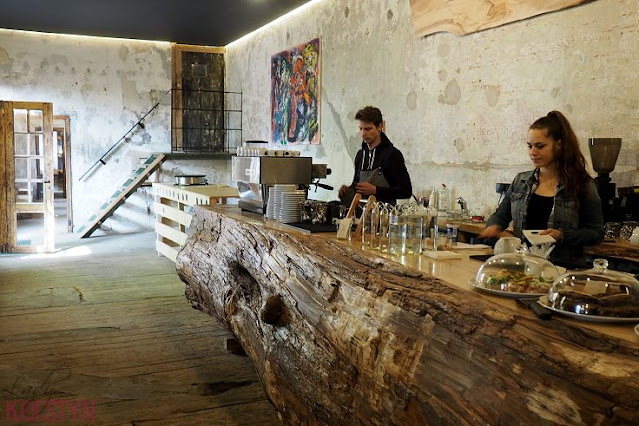














































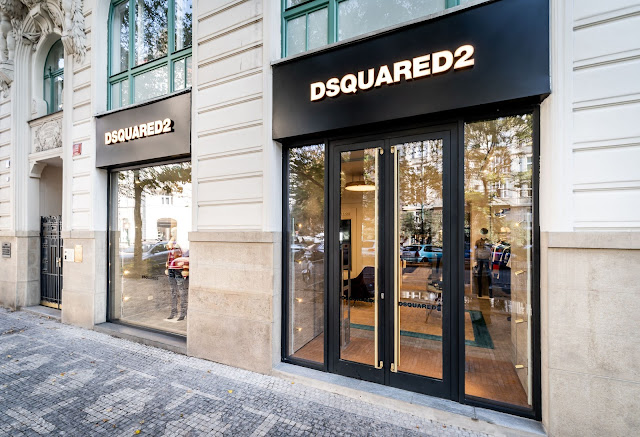








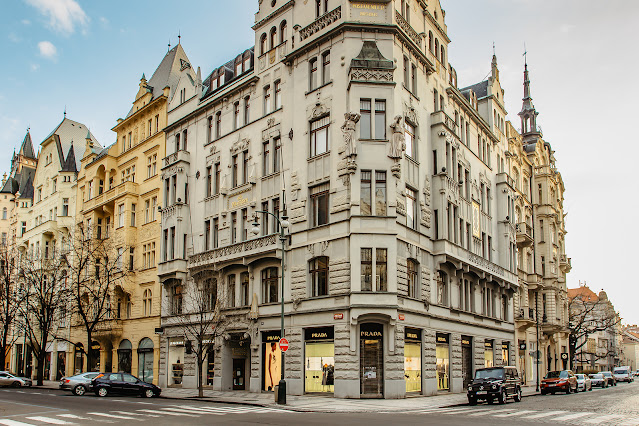























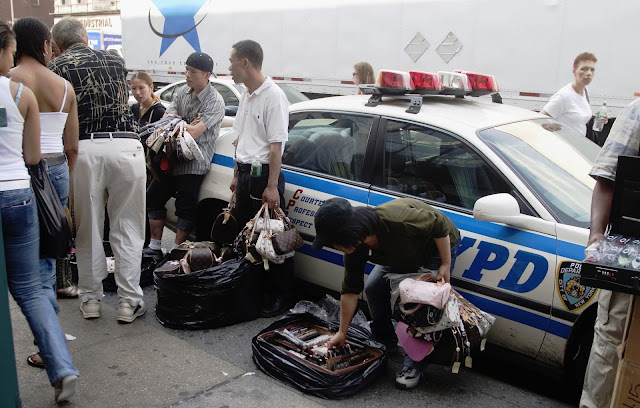


































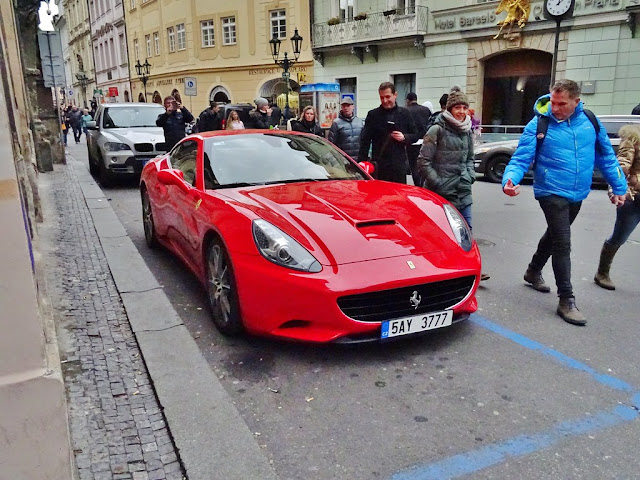

































.jpg)
















.svg.png)









































































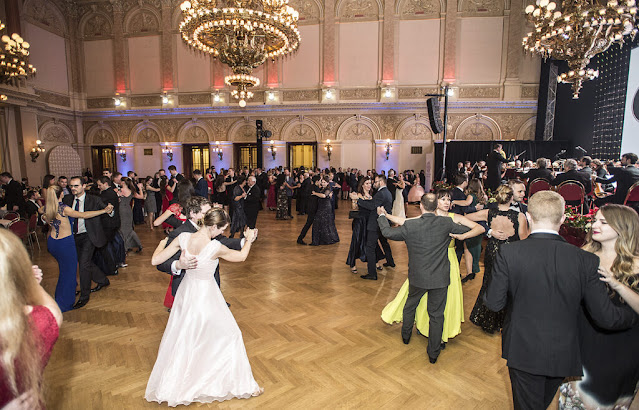

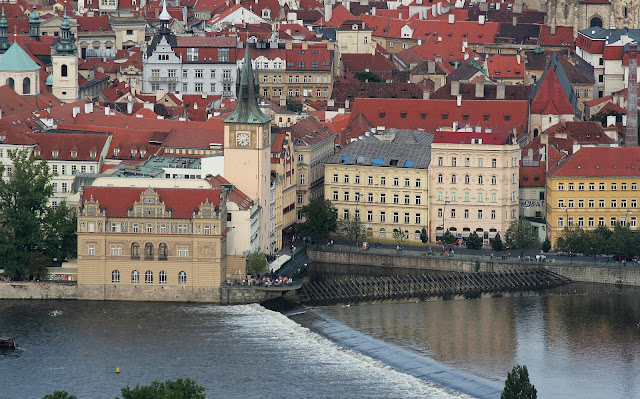






























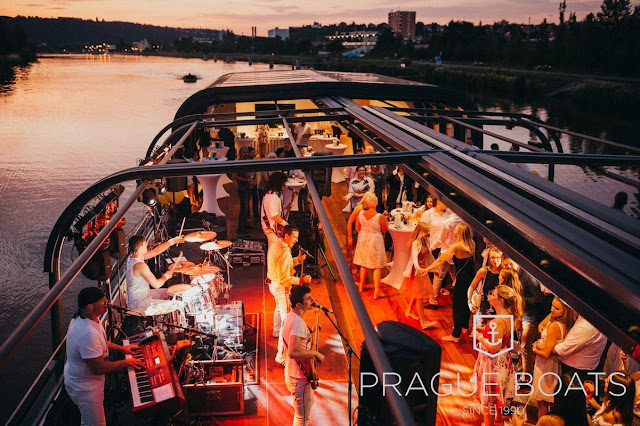










































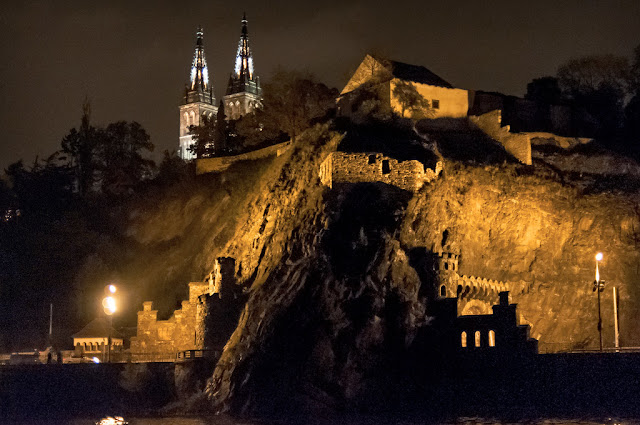






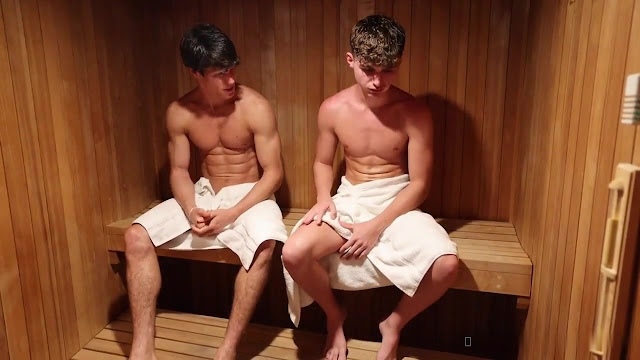















,_Praha_7,_ostrov_S%CC%8Ctvanice_1340,_Holes%CC%8Covice.jpg)


.jpg)

No comments:
Post a Comment
Don't be shy: leave your comments :)